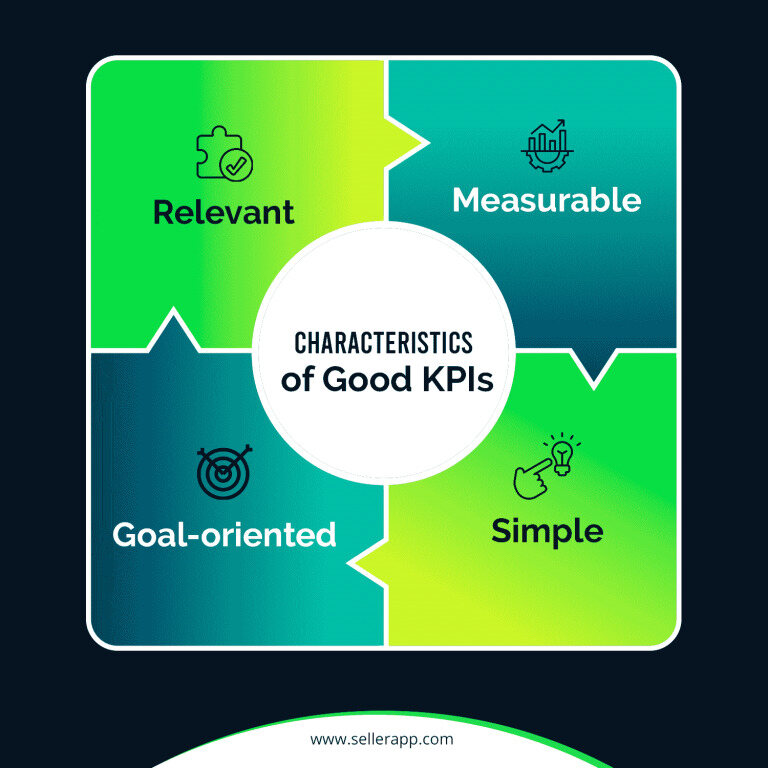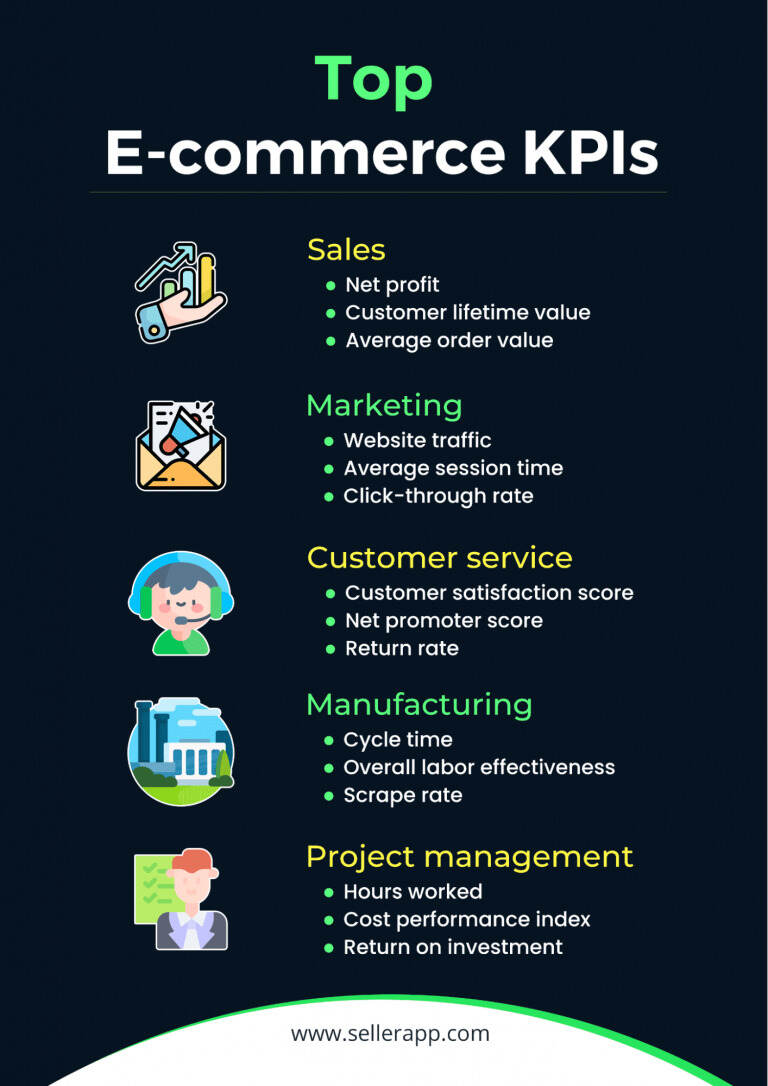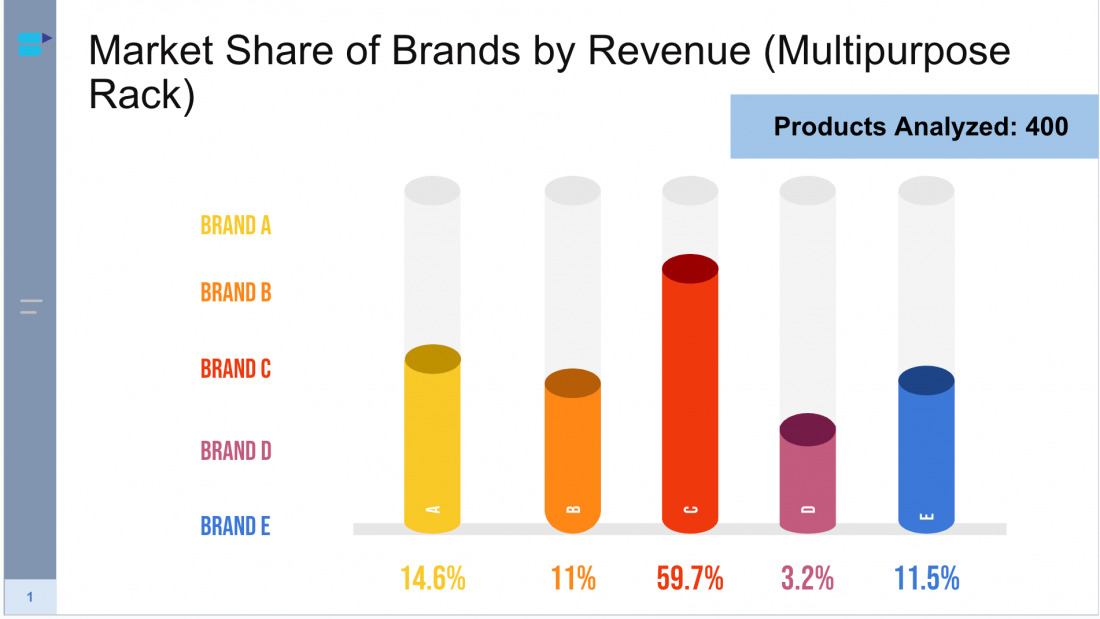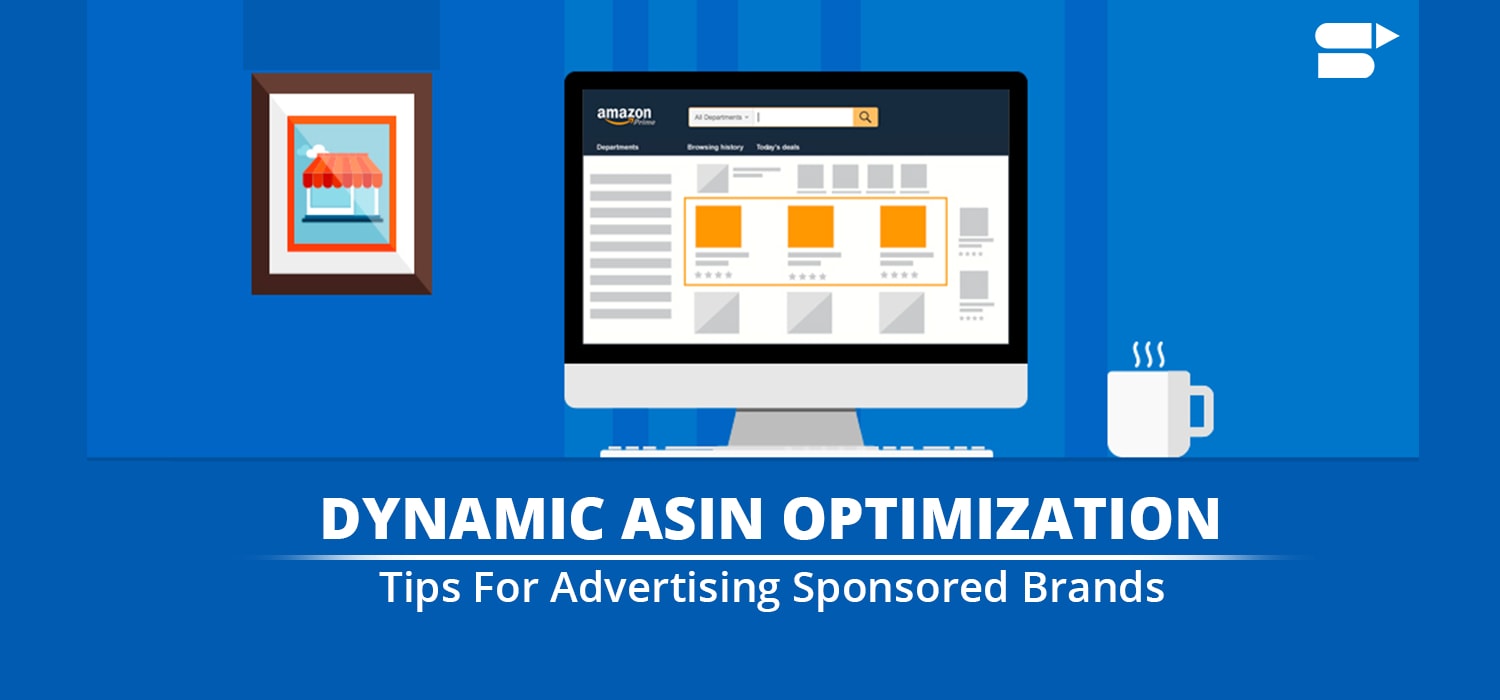50+ Essential E-commerce KPIs Every CXO Should Monitor for Optimal Selling on Amazon

As an e-commerce business owner – you will be constantly immersed in a sea of numbers – metrics, data, and trends are your daily bread and butter. Yet, amidst this numerical ocean, do you ever wonder which metrics truly matter for your business?
The right e-commerce KPIs (Key Performance Indicators) can significantly impact your business’s performance, but there’s no one-size-fits-all solution. The choice largely depends on your unique business goals.
However, there are universal e-commerce KPIs that apply to every online business.
This article will delve into the top e-commerce KPIs and guide you on choosing the right metrics for your business.
Let’s dive in.
Here is a quick peek into the article:
- What are e-commerce KPIs?
- 58 Most Important E-commerce KPIs in 2023
- How to choose the best e-commerce KPIs for your business?
- Final thoughts
What are e-commerce KPIs?

Think of e-commerce KPIs as the “North Star” for your online business.
These are the selected group of metrics that helps you understand how your business is performing against the business goal. They also help you identify the strengths, weaknesses, and opportunities for your business.
Let’s take the ‘Cart Abandonment Rate’ as an example. It measures the percentage of customers who added products to their cart but left without making a purchase.
If your cart abandonment rate is high, it could signal issues with your checkout process or even your pricing.
With this KPI, you can strategize ways to reduce cart abandonment and boost your overall sales.
In a nutshell, e-commerce KPIs are not just numbers. They’re your business’s pulse, through which you can clearly understand your business’s health and direction.
58 Most Important E-commerce KPIs in 2023
In the competitive world of e-commerce, tracking the right metrics is key to driving sales and achieving success. Here’s a list of all the e-commerce KPIS that can help you grow your business.

E-commerce KPIs for Inventory and Sales
Here are some important e-commerce KPIs for sales.
- Conversion rate
- Average order value (AOV)
- Shopping cart abandonment rate (CAR)
- Customer acquisition cost (CAC)
- Gross Profit
- Shopping Cart Conversion Rate (CCR)
- Cost of Goods Sold (COGS)
- Average Profit Margin
- Repeat Purchase Rate (RPR)
- Revenue per Click (RPC)
- Revenue per visitor (RPV)
- Purchase frequency
- Inventory Turnover
- Holding Inventory Ratio
- Net Profit Margin
Conversion Rate: It measures the percentage of website visitors turned into customers. For example, a 5% conversion rate means 5 out of 100 visitors make a purchase.
Conversion Rate = ( Number of Conversions/ Number of Visitors on the Website ) x 100
Optimize the product listing to improve the conversion rate.
Average Order Value (AOV): It shows the average dollar amount customers spend each time they place an order for your products.
Average Order Value = Total Revenue / Number of orders
Focus on increasing your product AOV to boost revenue without spending more on customer acquisition.
Customer Lifetime Value (CLTV): It refers to the total revenue your business generates from a customer over time.
Customer Lifetime Value = (Average Order Value x Purchase Frequency x Customer Lifespan) x Profit Margin
It takes into account all orders from a customer, including repeat purchases, average order value, and purchase frequency, and helps you understand customer loyalty and satisfaction.
Customer Acquisition Cost (CAC): It tells you how much you spend on average to acquire a new customer. Focus on keeping CAC lower than Customer Lifetime Value (CLTV) to maintain profitability.
CAC = Costs Spent on Customer Acquisition / Number of Customers Acquired
The ratio between CLTV and CAC measures the relationship between
CLTV:CAC: The CLTV:CAC ratio indicates how much value you generate for every dollar spent on acquiring customers.
A higher CLTV: CAC ratio indicates high profitability, and a lower ratio means that you are spending more than you are earning from your customers.
Shopping Cart Abandonment Rate (CAR): It indicates what percentage of users leave the website without completing the purchase. Keep competitive pricing, and reduce the friction during checkout to reduce the cart abandonment rate.
CAR = 1 – (total completed transactions/Total added carts) x 100
Gross Profit: It measures the profit after deducting the cost of goods sold (COGS).
Gross profit = Total Revenue – COGS
Net Profit: It refers to the profit after deducting all expenses and taxes from the total revenue generated.
Net Profit = Total Revenue – Cost of Goods Sold (COGS) – Operating Expenses – Taxes
Shopping Cart Conversion Rate (CCR): It measures the percentage of users who completed checkout and purchased the product.
Cart Conversion Rate = (Total Conversions / Total Number of Visitors) x 100
Cost of Goods Sold (COGS): It calculates the direct costs incurred in manufacturing and distributing the products sold. Ensure to keep the COGS low for high profitability.
Average Profit Margin: It shows the percentage of average profit you earn on each sale for a specific period. Focus on increasing the average profit margin as the sales ramp up.
Average Profit Margin = Gross Profit / Revenue
Repeat Purchase Rate (RPR): It measures the percentage of customers returning to your website and making a repeat purchase. It helps you understand brand loyalty.
RPR = Purchases from Repeat Customers / Total Purchase
Revenue per Click (RPC): It indicates the average revenue your product generates for each click from your advertising campaigns.
RPC = Revenue / Total Number of Clicks in your campaigns
Revenue per Visitor (RPV): This metric shows the average revenue generated for each website visitor. For example, If an e-commerce store generates $50,000 in revenue from 10,000 visitors, the revenue per visitor would be $50,000 / 10,000 = $5.
Revenue per visitor = Total income/number of visitors in a specific period
Purchase Frequency: It determines the average number of purchases each customer makes over a specific period. It’s a great KPI to measure customer loyalty and understand product performance.
Net Profit Margin: It calculates the actual percentage of profit you make after deducting all the expenses, including taxes, operational expenses, advertising expenses, and others.
Net Profit Margin = ( Net Profit / Net Sales ) x 100
Learn more about Amazon’s profit margin from the detailed guide.
Inventory Turnover: It tracks how often the entire inventory is sold throughout the year. It helps you optimize stock levels and manage cash flow.
Inventory turnover = Net Sales / Average Inventory at Selling Price
Holding Inventory Ratio:
It indicates the average cost of holding inventory before selling. The holding cost usually has storage, labor, and security costs.
Holding Inventory ratio = Holding costs / Inventory Value
Try to keep the holding cost between 25-30% of the inventory value for optimum function.
E-commerce KPIs for Marketing
Here are some of the most common e-commerce KPIs for marketing
- Website Traffic
- New Visitors vs. Returning Visitors
- Average Session Duration
- Pageviews per Session
- Bounce Rate
- Average Click-Through Rate (CTR)
- Email List Growth Rate
- Email Bounce Rate
- Email Open Rate
- Email Conversion Rate
- Social Media Engagement
- Social Media Followers
- Organic Rankings
- Customer Retention Rate
- Conversion by Device Type
- Advertising Impressions
- Traffic Source
- Mobile Site Traffic
- Product Review Count
- Customer Review Sentiment
Website Traffic: It tracks the total number of visitors who come to your e-commerce website. It helps you understand the effectiveness of your marketing efforts and overall brand visibility.
New Visitors vs. Returning Visitors: It differentiates between new and returning visitors. It allows you to gauge the effectiveness of customer acquisition strategies and measure customer loyalty.
Average Session Duration: It provides insights into you how long an average shopper spends on your website in a single session. Usually, the higher the Average session duration, the better — as it indicates shoppers are engaged with your products.
Avg. Sessions = Total Session Time / Total Number of Sessions
Pageviews per Session:
It indicates the average number of pages a shopper visits while navigating your e-commerce website. If the page views per session are higher, it means it takes too many clicks for a visitor to find the right product. So, you much rearrange the product catalog or revamp your website design.
Pageviews per Session = Total Number of Pageviews / Number of Visitors
Bounce Rate: It shows what percentage of visitors leave your website after visiting only one page. A high bounce rate may suggest issues with user experience or irrelevant content.
Bounce Rate = Number of One-page Visits / Number of Entries to a Website
Average Click-Through Rate (CTR): It tells you the percentage of shoppers on your website who click on a product link. A higher average CTR is always recommended.
Average CTR = total link clicks / total link impressions
Customer Retention Rate: It’s the percentage of customer who returns to your website and purchases your products. It helps you gauge customer satisfaction and loyalty.
Conversion by Device Type: It shows the total number of conversions based on the devices used, i.e., desktop, mobile, and tablet.
With this data, you can optimize your marketing strategies to convert more customers for each device.
Advertising Impressions: It indicates the total number of times an ad is displayed to the audience, irrespective of user interaction. It helps advertisers gauge the visibility of their campaigns.
Traffic Source: This metric tells you from which sources your website visitors are coming, such as organic search, paid ads, social media, and email newsletters.
This information lets you adjust your marketing efforts and maximize traffic.
Mobile Site Traffic: It measures the percentage of visitors who access your website via mobile devices. It is a crucial metric for ensuring a responsive and mobile-friendly customer experience.
Email List Growth Rate: It is the percentage rate at which your email list is growing. It helps you understand the success of your lead-generation strategies and the overall health of your email marketing efforts.
Email List Growth Rate = [(Number of New Subscribers – Number of Unsubscribes) / Total Subscribers ] x 100
Email Bounce Rate: It’s the percentage of emails that fail to deliver to the recipient’s inbox. You may need to change your email service provider if the email bounce rate is high.
Email Bounce Rate = (Total Number of Bounced Emails / Total Number of Emails Sent) x 100
Email Open Rate: It’s the percentage of emails the recipients have opened. If the open rate is low, play around with the email subject line to improve the open rate.
Email Open Rate = ( Number of Unique Opens / Number of Total Successful Emails Sent) x 100
Email Conversion Rate: It indicates the percentage of subscribers that converted from your emails. It’s one of the most important metrics that shows the profitability of your email marketing campaigns.
Email Conversion Rate = Number of Conversions from Emails / Number of Emails Sent) x 100
Social Media Engagement: By monitoring likes, comments, shares, and other interactions on your social media platforms, you can measure the level of engagement your brand gets on social media.
Recommended read: How to set up Amazon Brand Gating?
Social Media Followers: This metric indicates your social media reach. The more followers you have, the better your brand awareness and reach.
Organic Ranking: This metric tells you where your product ranks on different search engines like Google, Amazon, or other marketplaces for certain keywords. It helps you understand the impact of your SEO efforts and track the visibility of your business.
Product Review Count: This metric tracks the number of product reviews on your website and the quality of the reviews. It helps you understand customer sentiment, improve your product, and build trust with potential customers.
Customer Review Sentiment: It refers to the sentiment expressed by customers in the review section on the product listing. It involves analyzing the tone, emotions, and attitudes conveyed by customers in their reviews, whether positive, negative, or neutral.
Review sentiment analysis helps you understand and evaluate customer experiences, identify strengths and weaknesses, and make data-driven decisions to improve your product.
If you need a detailed industry report to understand market share, category trends, and competitor analysis, SellerApp can help you with that.

We provide comprehensive industry reports based on your business goal to optimize your marketing strategies, improve customer experience, and boost your online business.
E-commerce KPIs for Customer Service
Given below are some of the e-commerce KPIs for customer service:
- Customer Satisfaction (CSAT) Score
- Net Promoter Score (NPS)
- Average Complaint Resolution Time
- Refund/Return Rate
- First response time
- Escalation rate
- Customer service chat counts
- Customer service phone call counts
- Customer service email counts
- Active queries
Customer Satisfaction (CSAT) Score: This metric measures how satisfied the customer is, after using your product or service. The answer generally comes from a scale from 1 to 5/10.
Net Promoter Score (NPS): This metric gives insight into how likely your customers will recommend your product to someone else. The scores range from 0-10. And based on the scores, customers are distinguished into three categories:
- Promoters: Those who have given a 9 or 10 score
- Passives: Those who have given a 7 or 8 score
- Detractors: Those who have given a 0 to 6 score
Average Complaint Resolution Time: It indicates the average time the customer support team takes to resolve a customer complaint.
A lower complaint resolution time shows that you provide effective resolution to customers. A good DTC brand should aim for a low average resolution time as it is one of the crucial brand metrics that impact your customer experience and branding.
Average resolution time = Total time taken to resolve all inquiries / total inquiries
Refund/Return Rate: It indicates the percentage of products that the customer returned or asked for a refund. If the return rate is high, it means that you are unable to fulfill customers’ expectations.
Return Rate = total products returned / total products sold
Escalation rate: This metric indicates how many times a customer asked to speak with the manager or supervisor. Try to keep the escalation rate low.
Customer service chat count: If you have a live chat on your e-commerce website, this metric indicates how often a customer initiates a conversation. A low customer service chat count means there are fewer issues customers face.
Customer service phone call count: It indicates how many phones calls your customer service gets from the customers. Like the chat count, the lower the phone call number, the better.
Customer service email count: It’s the number of emails your customer service team gets from the customers. Try to keep the number low.
Active queries: These indicate the number of active or unresolved customer tickets you have in a specific period. Always aim to have zero active customer tickets by the end of the week.
Check out this guide to know about Amazon return pallets.
E-commerce KPIs for Manufacturing
Given below are some of the essential e-commerce KPIs for manufacturing:
- Cycle time
- Throughput
- Overall equipment effectiveness
- Overall labor effectiveness
- First-time yield
- Scrap rate
- Manufacturing cost per unit
- Non-compliance incidents
Cycle time: Cycle time measures the time it takes to manufacture one unit of a product. A lower cycle time indicates more efficient manufacturing.
Throughput: It shows how many products your factory can produce within a specific time. It indicates the efficiency of the plant.
Overall equipment effectiveness (OEE): This metric evaluates the effectiveness and efficiency of manufacturing equipment. It takes into account factors such as equipment availability, performance, and quality to determine the overall productivity of the manufacturing process.
Overall labor effectiveness (OLE): OLE measures the efficiency and productivity of labor in the manufacturing process. It weighs factors like labor availability, performance, and quality to assess the overall effectiveness of the workforce.
First-time yield: It measures the percentage of products that pass all quality checks on the first production attempt. A high first-time yield indicates high-quality control and efficiency in the manufacturing process.
Scrap rate: It indicates the percentage of defective or unusable products generated during manufacturing. A low scrap rate shows effective quality control and efficient production.
Manufacturing cost per unit: It indicates the average cost of producing one unit of a product. It helps you to calculate the COGS and set your price right.
Non-compliance incidents: These refer to the number of instances where manufacturing processes or products fail to meet regulatory or compliance standards. Try to minimize non-compliance incidents to avoid penalties.
E-commerce KPIs for Project Management
Given below are some of the e-commerce KPIs for project management:
- Hours worked
- Budget
- Return on investment
- Cost Variance
- Cost performance index
- Project milestone completion number
Hours worked: This metric tells you the total number of hours your team puts into a project. Always assess the variation of estimates vs. actual hours worked to understand
Budget: It tracks the allocated budget for a project and compares it to the actual project expenditures. With this metric, you can control the expenses and ensure the project remains within the approved budget.
Return on Investment (ROI): ROI measures the financial return generated from your efforts and investments. In short, it helps you understand the profitability of your business.
Cost Variance: It compares the total predicted costs of your project compared to the actual cost. Tracking this will help you understand how often your project is within or out of your budget. Ideally, the cost variance should be a positive number close to zero.
Cost Performance Index (CPI): CPI evaluates the cost efficiency of a project. It measures the value of work accomplished compared to the actual costs incurred. A CPI value greater than 1 indicates good cost performance, while a value below 1 suggests poor cost performance.
Recommended read: What is an Inventory Performance Score?
Project milestone completion number: This metric tracks the number of project milestones completed within a specific timeframe. It helps monitor project progress and provides a measure of achievement.
Recommended read: How does Amazon’s Anti-counterfeiting Policy work?
How to Choose the Best E-commerce KPIs for Your Business
Okay, so you’ve learned about the different e-commerce KPIs. But now comes the big question:
“What KPIs should I pick for my business?”
Here are some points to keep in mind before selecting your best fit:
Align with Your Business Goals
First things first, understand your business goals.
Are you focusing on customer acquisition, retention, or increasing average order value? Depending on your objectives, the KPIs you monitor will change.
For instance, if customer acquisition is your primary goal, metrics like ‘Website Traffic’ or ‘New Customer Rate’ should be on your radar.
Consider Your Industry
A crucial KPI for a fashion e-commerce site may not hold the same importance for an online grocery store. For example, a fashion store might prioritize ‘Return Rate,’ while an online grocery might be more concerned with ‘Inventory Turnover.’
Evaluate Your Business Stage
Is your business in its seed stage, or have you been around the block a few times?
For newer businesses, focusing on ‘Customer Acquisition Cost’ or ‘Conversion Rate’ might be beneficial. In contrast, more established businesses might look at ‘Customer Lifetime Value’ or ‘Repeat Customer Rate.’
Pick Easy-To-Measure KPIs
Select easily measurable KPIs that offer valuable insights into your business growth. For example, there’s no point in measuring Brand Equity or Perception, as these are difficult to measure given the time and effort. Instead, you should track KPIs like customer lifetime value or conversion rate, as these can give you a clear picture of your business’s performance.
Don’t track so many KPIs that don’t matter to the business goal and add to the confusion. Select a few that gives you the most useful and actionable information.
Final Thoughts
Choosing the right e-commerce KPIs is crucial for the success of your online business. These act as your compass, guiding you toward meeting your business goals.
Once you’ve set your KPIs, track those metrics regularly to stay on track and make data-driven decisions.
It’s not that difficult to do. We recommend using a solution like SellerApp to track and analyze your e-commerce KPIs and make data-driven decisions for your business. Of course, you can also tap into SellerApp’s bank of ecommerce data by using our Ecommerce Data API and effectively scale your business.
So, start tracking, analyzing, and taking action today with SellerApp. Your e-commerce journey awaits!
Additional read:
Key Differences: Etsy vs. Amazon
A Joint Analysis by Payoneer and SellerApp
15 E-commerce Marketing Strategy











Seth
September 11, 2023Superb Blog, Thank you for sharing.
Clare Thomas
March 15, 2024Very happy to hear that.